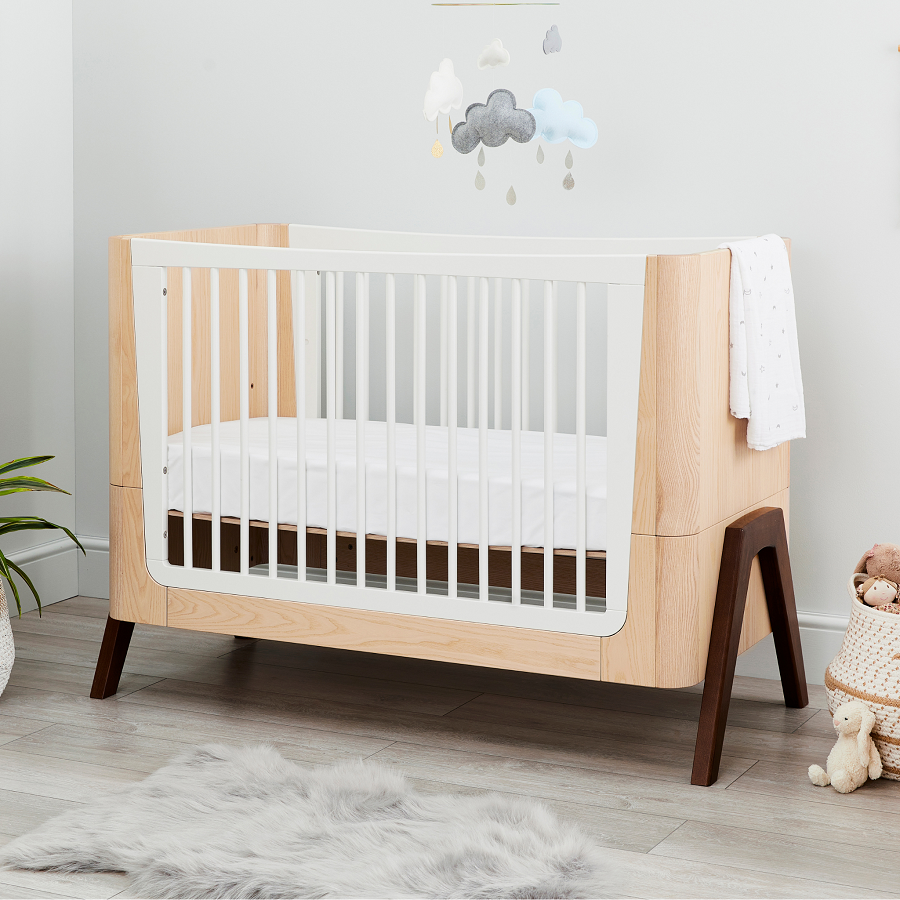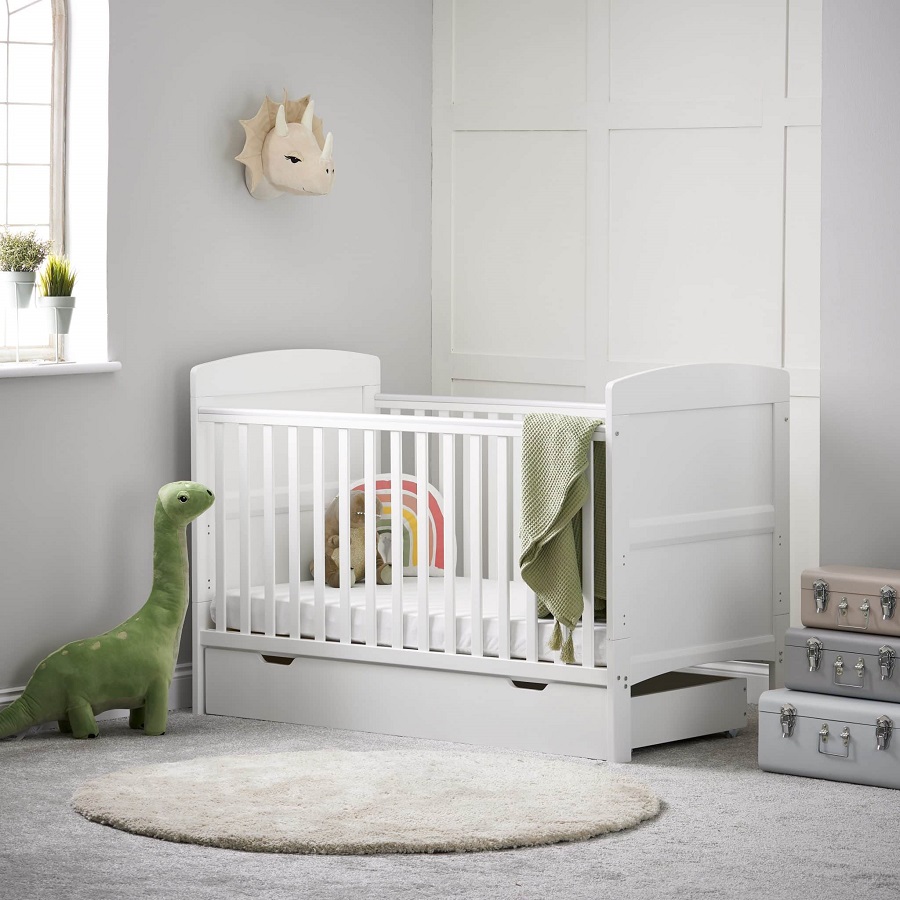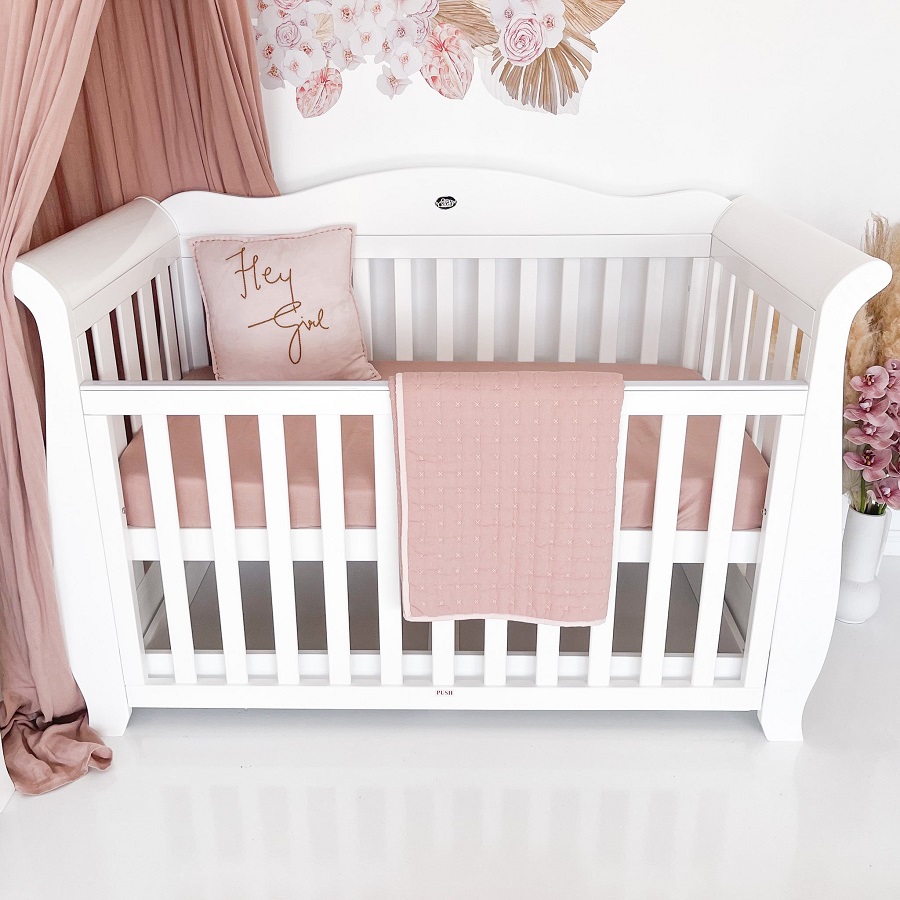Essential Safety Standards for Baby Cot Beds
When selecting a baby cot bed, safety should be the top priority. Parents must ensure that the product meets essential safety standards. These standards cover key safety aspects such as the strength of materials, the spacing between bars, and the absence of sharp edges or small parts that could pose a choking hazard. It’s important to check for compliance with local safety regulations like those established by the Consumer Product Safety Commission (CPSC) in the United States or the European Standards (EN) in Europe.
Here are critical safety standards to consider for baby cot beds:
- Sturdy Construction: The cot bed must have a solid build, capable of withstanding baby’s movements without collapsing.
- Safe Slats Spacing: The space between slats should be narrow enough to prevent a child’s head from becoming trapped.
- Non-toxic Materials: Paints and finishes must be free from harmful chemicals, such as lead and phthalates.
- Secure Hardware: All screws and bolts should fit tightly and be checked regularly for looseness.
- No Protruding Parts: To prevent clothing from getting hooked and pose a strangulation risk, all parts should be flush to the cot’s surface.
- Mattress Fit: The mattress should fit snugly within the cot to avoid gaps where a baby could potentially get stuck.
Remember, while standards can guide you, always double-check for any product recalls or safety advisories related to the baby cot bed you consider purchasing. Regularly reviewing these safety features can help in providing a safe sleep environment for your baby. A well-chosen baby cot bed that adheres to these safety standards is a step towards peace of mind for any parent.

Identifying Hazards: What to Look Out For
When considering the safety of a baby cot bed, it’s crucial to be aware of potential hazards that could compromise your baby’s well-being. Vigilance is key in identifying these risks before they pose a threat to your child. Here are important hazards to be on the lookout for:
- Choking Hazards: Small parts or decorations that can come loose from the cot bed may be swallowed by infants, leading to choking.
- Strangulation Risks: Cords or strings, if attached to the cot bed, can be dangerous. Keep them out of reach to prevent strangulation.
- Entrapment Dangers: Gaps in the bed structure can trap your baby’s limbs or head. Ensure that slats and other openings are of safe size.
- Falling Risks: Check the cot bed for any way a baby could climb out and fall. A cot bed’s sides should be high enough to prevent climbing.
- Suffocation Hazards: A mattress that is too soft, or has gaps between it and the cot frame, increases the risk of suffocation.
By recognizing these hazards, parents can take proactive steps to minimize the risks associated with baby cot beds. Always conduct thorough checks and refer to safety guidelines consistently to ensure that the cot bed remains a safe place for your baby to rest.
Types of Baby Cot Beds and Their Safety Features
The market offers diverse types of baby cot beds, each with unique safety features. Understanding these can help you make an informed choice. Here’s a breakdown of the main types:
- Standard Baby Cots: These are durable and come with fixed sides. They ensure a secure, enclosed sleeping area for your baby.
- Convertible Cots: They grow with your child, converting to toddler beds. Most have adjustable mattress heights for added safety as your baby grows.
- Travel Cots: These are lightweight and foldable for easy transport. They should have secure, lockable sides to prevent collapsing when in use.
- Co-Sleeper Cots: These attach to your bed, allowing close contact with your baby. They must have a strong attachment system to prevent gaps.
- Multi-functional Cots: Some cots come with built-in changing tables or drawers. Ensure that the added parts do not compromise the cot’s stability.
When choosing a baby cot bed, check for these safety features:
- Adjustable Base Heights: This can prevent falls by adjusting the mattress level as your baby grows and becomes more active.
- Teething Rails: Protect your baby from chewing on the cot’s edges by providing a safe, non-toxic teething surface.
- Lockable Wheels: If the cot has wheels, they should lock in place to prevent unwanted movement.
Remember to always verify that the baby cot bed complies with the latest safety standards. A cot bed with robust safety features is a wise investment for your child’s well-being.

The Importance of Compliance with Safety Certifications
Ensuring your chosen baby cot bed meets safety certifications is vital. These certifications are not just stickers on a box; they represent a product’s compliance with stringent safety standards. Products undergo rigorous testing and quality assurance processes to earn these marks of safety. Certifications to look for include the CPSC in the United States or the EN standards in Europe. These seals of approval mean the cot bed has passed tests for various hazards, including toxic chemicals, structural integrity, and design safety.
Parents should prioritize certified baby cot beds for several reasons:
- Peace of Mind: Knowing the cot complies with safety regulations allows parents to rest easy.
- Quality Assurance: Certifications denote that a product meets high-quality standards in material and construction.
- Reduced Risks: A certified cot reduces the likelihood of accidents from structural failures or hazardous materials.
- Ongoing Standard Compliance: Certified products must continuously meet evolving safety standards, assuring up-to-date safety features.
Remember, always check for a certification label on the baby cot bed you are considering, and verify its authenticity. A cot bed with safety certifications brings confidence that your baby’s sleeping environment is as safe as it can be.
How to Properly Assemble and Maintain a Baby Cot Bed
Proper assembly and regular maintenance of a baby cot bed are crucial to ensure ongoing safety for your baby. Here is a step-by-step guide and tips to help you set up and keep the cot in top condition.
- Read the Manual: Always start with the manufacturer’s instructions. They provide the specific steps for safe assembly.
- Gather the Right Tools: Use the right tools as recommended to avoid damaging parts.
- Check All Parts: Before starting, inspect each piece to ensure nothing is broken or missing.
- Tighten Screws: Assemble the cot securely, making all screws and bolts tight without over-tightening.
- Double-Check Assembly: Once assembled, give the cot a shake to check for any wobbles or loose parts.
- Routine Checks: Regularly inspect the cot for loose fittings and signs of wear or damage.
- Clean Regularly: Wipe the cot with a mild, non-toxic cleaner to keep it hygienic and free from dust.
- Avoid Modifications: Don’t alter the cot as it could compromise the design’s safety integrity.
- Address Recalls Promptly: If the product is subject to a recall, follow the manufacturer’s instructions immediately.
By meticulously assembling and consistently maintaining your baby cot bed, you contribute significantly to providing a secure and supportive sleep environment for your child.
The Role of Mattress Selection in Cot Bed Safety
When it comes to ensuring the safety of a baby cot bed, the mattress plays a crucial role. Choosing the right mattress is about more than comfort—it’s about safety. Here are the key factors to consider when selecting a mattress for your baby’s cot bed:
- Proper Size: The mattress must fit snugly in the cot. There should be no gaps more than two fingers wide between the edge of the mattress and the cot sides.
- Firmness: A firm mattress supports your baby’s growing bones. It also lowers the risk of suffocation, a concern with soft mattresses.
- Breathable Material: The material should allow air to circulate. This helps prevent overheating and keeps the sleeping surface fresh.
- Waterproof Cover: Accidents happen, and a waterproof cover will protect the mattress from moisture and mold.
- Certified for Safety: Look for certifications that assure the mattress is free from harmful chemicals.
Remember to check the mattress regularly for signs of wear and to ensure it remains firm and supportive. A good quality, well-fitted mattress is key to a safe and cozy baby cot bed.

Common Myths and Facts About Baby Cot Bed Safety
When it comes to baby cot bed safety, many myths circulate among parents and caregivers. It’s crucial to separate fact from fiction to ensure your baby’s wellbeing. Below are some common myths paired with the facts.
- Myth: Soft bedding is cozier and better for a baby’s sleep.Fact: A firm mattress within a baby cot bed lowers suffocation risk and supports your baby’s growing bones.
- Myth: If a cot bed has been used for older siblings, it’s safe for the new baby.Fact: Always inspect for wear and damage. Safety standards update often, ensure the cot still complies.
- Myth: Bumper pads make baby cot beds safer by protecting against bumps.Fact: Bumper pads can pose suffocation, strangulation, and entrapment risks and are not recommended.
- Myth: As long as a toy is in the cot, a baby will be entertained and safe.Fact: Toys can present choking hazards. Keep the cot clear of toys when the baby is unsupervised.
- Myth: Second-hand cots are a budget-friendly and reliable option.Fact: They might not meet current safety standards. Always check for recalls and compliance.
Understanding the truth behind these myths will help you make the safest choices for your baby’s sleep environment. The safety of the baby cot bed is not just about the physical product but also about its proper use and our perception of what is safe. Remember to always check with trusted safety standards and guidelines to stay informed.
Tips for Choosing the Right Baby Cot Bed for Your Child
Selecting the ideal baby cot bed requires careful consideration. Keeping in mind safety and comfort, follow these simple tips to make the best choice for your child:
- Check for Safety Certifications: Ensure the cot bed has up-to-date safety certifications like CPSC or EN.
- Assess the Material Quality: Look for durable materials that are non-toxic and built to last.
- Consider Your Space: Choose a cot that fits well in the nursery, allowing room for safe access around it.
- Think Long-Term: If you want a bed that grows with your child, consider a convertible cot bed.
- Ease of Cleaning: The cot should be easy to clean, with reachable areas to ensure proper hygiene.
- Appropriate Size: The cot bed should accommodate your baby comfortably with room to grow, but it must not be too large as to pose safety risks.
- Match Your Style: Pick a design that complements your nursery’s theme.
- Set a Budget: Determine how much you want to spend and find the best option within your range.
- Read Reviews: Learn what other parents say about the cot bed’s safety and durability.
- Test the Mechanisms: If possible, try the cot bed in-store to check the ease of use.
By considering these factors, you can choose a baby cot bed that ensures safety, fits your budget, and suits your style. Remember that while comfort and aesthetics are important, safety must always come first.
